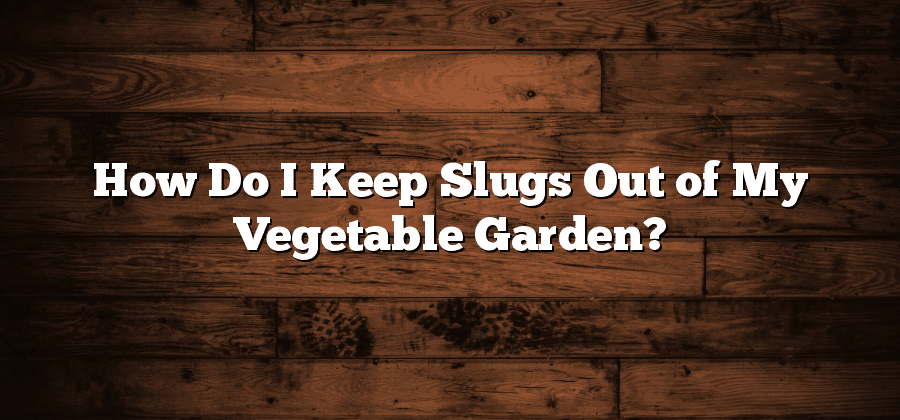Understanding the Slug Problem in Vegetable Gardens
Slugs can be a frustrating and persistent problem in vegetable gardens. These slimy creatures have a voracious appetite and can quickly decimate your plants if left unchecked. Understanding the slug problem is essential for successful garden management.
One of the main reasons slugs are such a nuisance in vegetable gardens is their ability to multiply rapidly. These hermaphroditic creatures can self-fertilize and lay hundreds of eggs, leading to a population explosion if not controlled. Additionally, slugs thrive in moist environments and are most active during the night, making it difficult to spot and eliminate them. These factors combined make slugs a common enemy for gardeners looking to protect their precious vegetables from damage.
Identifying Common Slug Species in Your Area
The first step in effectively managing slugs in your vegetable garden is to accurately identify the common slug species in your area. By understanding the specific slugs present in your region, you can tailor your control methods accordingly.
One common slug species found in many areas is the gray garden slug (Deroceras reticulatum). This slug is typically light gray or brown, with a mottled pattern on its slimy body. It tends to be around 1 inch in length and can cause significant damage to young plants and seedlings. Another species you may encounter is the leopard slug (Limax maximus). This slug is larger, with a unique spotted pattern on its back. While it may not be as destructive as the gray garden slug, it can still pose a threat to your garden if its population becomes too high.
Identifying the slug species in your area is crucial for effectively managing them. Armed with this knowledge, you can now consider creating a slug-resistant garden design to further protect your plants from these slimy pests.
Creating a Slug-Resistant Garden Design
One of the key steps in creating a slug-resistant garden design is to choose the right plants. Slugs are particularly attracted to tender, succulent vegetation, so opt for plants with tougher leaves and stems. Varieties like lavender, rosemary, and thyme are known to be less appealing to slugs due to their strong aroma. Additionally, consider planting more compact, upright plants rather than low-growing, dense foliage, as slugs prefer the shelter and moisture provided by thick ground cover.
Another important aspect of a slug-resistant garden design is proper spacing between plants. Crowded, overcrowded gardens can create the perfect hiding places for slugs, allowing them to multiply rapidly. By giving plants enough room to breathe, with good airflow and sunlight, you can make the environment less attractive to slugs. Aim for a balance between a visually appealing garden and a layout that discourages slug infestation.
Implementing Natural Slug Deterrents
Slug infestations can be a frustrating and destructive problem in vegetable gardens. Fortunately, there are natural slug deterrents that can help control these pesky pests without the use of harmful chemicals. One effective method is using copper barriers. Slugs dislike the sensation of crawling across copper, so placing copper strips or tape around the perimeter of your garden beds or pots can act as a deterrent. Just make sure the copper is at least 4 inches wide and in direct contact with the soil to ensure maximum effectiveness.
Another natural deterrent is diatomaceous earth. Derived from the fossilized remains of diatoms, this powdery substance can be sprinkled around plants or along paths to create a barrier that slugs find difficult to cross. The sharp edges of the diatomaceous earth damage the slugs’ soft bodies, causing them to dehydrate and die. However, it’s important to note that diatomaceous earth can also harm beneficial insects, so use it sparingly and only in areas where slugs are a significant problem.
Using Physical Barriers to Keep Slugs at Bay
Slugs can be a persistent menace in vegetable gardens, but there are effective strategies to keep them at bay. One such method is the use of physical barriers. By creating a physical barrier around your plants, you can prevent slugs from accessing them and causing damage.
There are several types of physical barriers that can be employed in your garden. One option is to use copper tape, which slugs find unpleasant to crawl over. By placing a strip of copper tape around the perimeter of your garden beds or individual plants, you can effectively deter slugs from entering. Another option is to install barriers made from materials such as plastic or metal. These barriers can be buried partially in the soil to create a physical barrier that slugs cannot easily cross. Additionally, protective collars made from materials like plastic cups or cardboard can be placed around individual plants to provide a barrier against slugs. By implementing these physical barriers, you can create an effective defense against slugs in your garden.






